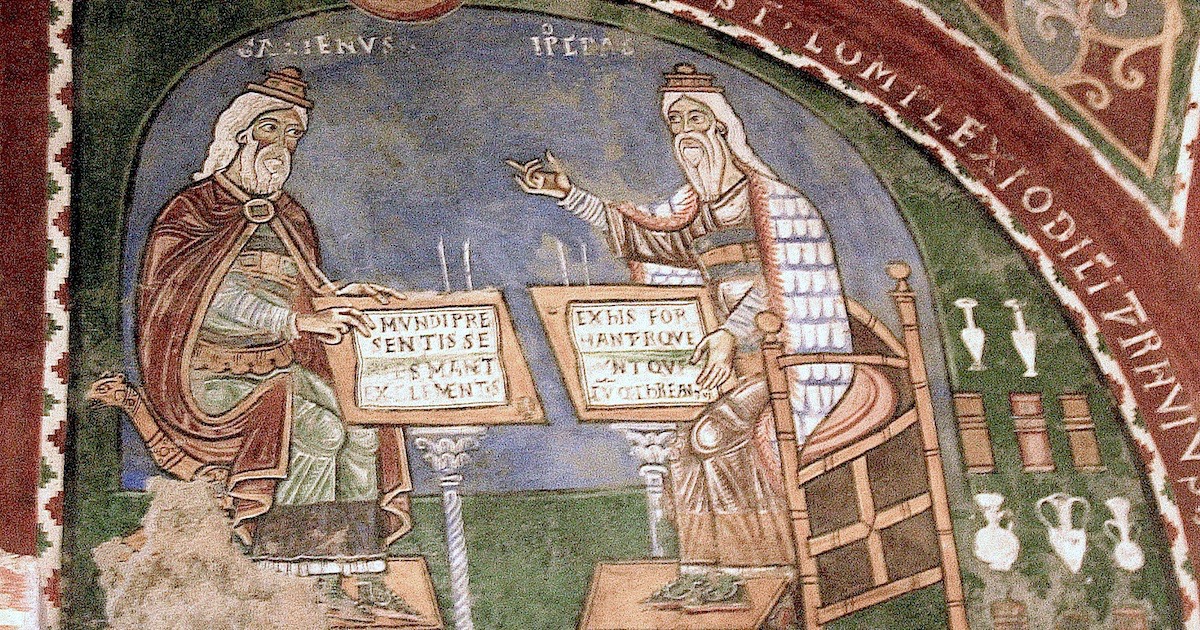Medicine, Religion, and Cosmos — Was Andrew Cuomo Wrong to Invoke God?
Published at Evolution News
In a press conference yesterday about the coronavirus, New York Governor Andrew Cuomo used notably religious language. He observed (at 33 minutes) that healthcare workers are “doing God’s work” of caring for people. Was he mistaken in saying so? You might well think so from watching the Cosmos series on Fox and the National Geographic channels.
Episodes 5 and 6 of this new season of the program, with Neil deGrasse Tyson, aired on Monday. See here for commentary from Evolution News on episode 6. Going a little out of order, here are my thoughts on episode 5, entitled “The Cosmic Connectome.” This episode gives the impression that ancient medicine, with few exceptions such as the Greek physician Hippocrates and his followers, consisted merely of “ritualistic appeasement of the gods.” Reliable medicine triumphed only as science conquered religion. Wrong impression! Let’s get this right.
Ancient Medicine
In their introduction to the history of medicine, Essential Readings in Medicine and Religion (Johns Hopkins University Press, 2017), Gary Ferngren and Ekaterina Lomperis write: “Healing in the ancient world took a variety of forms, some secular and some religious or magical.” Here is their summary of the causal repertoire of ancient medicine (both before and after Hippocrates) in Mesopotamian, Egyptian, Hebrew, Greek, Roman, and early Christian texts:
Disease was generally attributed to four kinds of causation. In the first, it was said to be caused by gods or divinities and was often considered to be retributive, that is, inflicted in response to an act that had aroused the displeasure of a god or divine force. In the second type, disease was attributed to demons (minor deities or malevolent spirits). In the third, it was said to be caused by the magic of magicians or sorcerers. Finally, disease was seen to be the result of natural causes that could be observed, for example, in wounds and broken bones. While in some societies one or another model of disease causation was dominant, in most ancient cultures all four were seen as potential causes, and a proper diagnosis was necessary to determine which type was the cause and what kind of treatment would be effective in each instance.
Religion and science-based medicine have continued to interact in modern times, up through the current COVID-19 pandemic. Like Governor Cuomo, many people today still see religion and medicine as operating in harmony. They practice social distancing (echoing Old Testament leprosy protocol), accept medical ventilator assistance (if available), and pray. See neurosurgeon Michael Egnor’s comments, “Why Prayer Is Wise During a Pandemic,” at Mind Matters.
Medicine and Christianity
Prior to the public hospitals created by ancient Christians, very few ancient people had access to physicians. Early Christians proclaimed and practiced the harmony of faith (prayer, not pagan magic) and medical technology. Much of the subsequent humanitarian expansion of medicine, especially for the poor, was inspired and funded by Christianity. Many hospital names still reflect this religious heritage.
Although few medical practices prior to about two hundred years ago significantly resulted in healing, this was not due to religious hindrances to medical progress. Rather, biomedical science, needed to dramatically improve medical practice, took a long time for humanity to discover. This largely occurred in the modern Western world. The Judeo-Christian tradition proved to be a supportive context for such discoveries. See my video that deals with this subject, “Three Big Ways Christianity Supported the Rise of Modern Science.”
Tyson’s Cosmic Religion
So Cosmos host Neil Tyson is wrong to say that the hallmark of modern science and enlightened medicine is the belief that “nothing happens without a natural cause.” That is a narrow philosophical belief that is out of touch with the cultural roots of modern science. Discovery of the cause-and-effect structure of the natural world has been best fostered in cultures committed to a belief in a supernatural creator who made a world with discoverable natural laws and discernible natural histories.
Despite Tyson’s many misguided criticisms of theistic religion, his own materialistic faith is granted a privileged, but undeserved, authority in Cosmos 3.0. Much of the rest of episode 5 is devoted to celebrating the emergence of consciousness from material processes, even though there is no good explanation for how this could have happened by a series of unguided physical events. Echoing Carl Sagan, Tyson defines the universe as “everything that ever was, is, or will be.” This is a statement of faith. Science, in principle, could not derive such a conclusion.
Finally, Tyson conveys religious awe when he concludes the episode with the hopeful anticipation that, after sharing our digitized brain contents with alien superintelligence, humanity will experience the “ultimate realization of emergence, a cosmos interconnected by thoughts and dreams.” Salvation by technology! This is an oblique expression of the extraterrestrial enlightenment myth that I debunk in my book Unbelievable. See also, “Unbelievable: The Myth of Alien Enlightenment.” Be on the lookout for more of this muddled naturalistic Nirvana in the remaining episodes of Cosmos.
Editor’s note: Find further reviews and commentary on the third season of Cosmos, “Possible Worlds,” here:
- “Cosmos Episode 6 — That’s Entertainment! (But Is It Science?)”
- “The Biggest Myth So Far in Cosmos 3.0 — Baruch Spinoza as Science Hero”
- “New Cosmos Episodes: Only Part of the Story”
- “Counterprogramming for Cosmos 3.0: Two New Videos from Science Historian Mike Keas”
- “Cosmos 3.0 Revisits Themes of the Past, with Familiar Historical Mythmaking”
- “Cosmos 3.0 with Neil deGrasse Tyson Arrives Tonight at 8 PM, Somewhat Dented”
Image credit: Galen and Hippocrates, two ancient physicians, depicted in a fresco from Anagni Cathedral in Italy, by Nina Aldin Thune via Wikimedia Commons.
